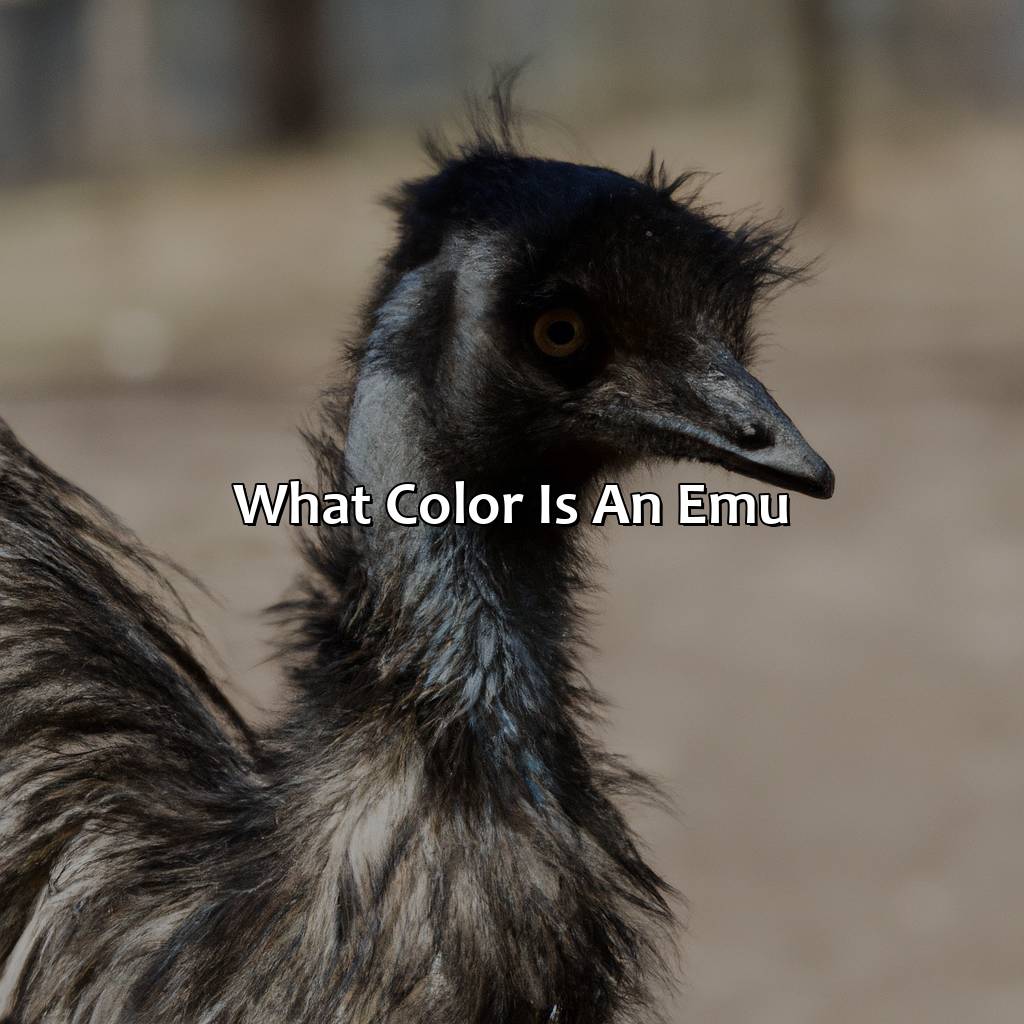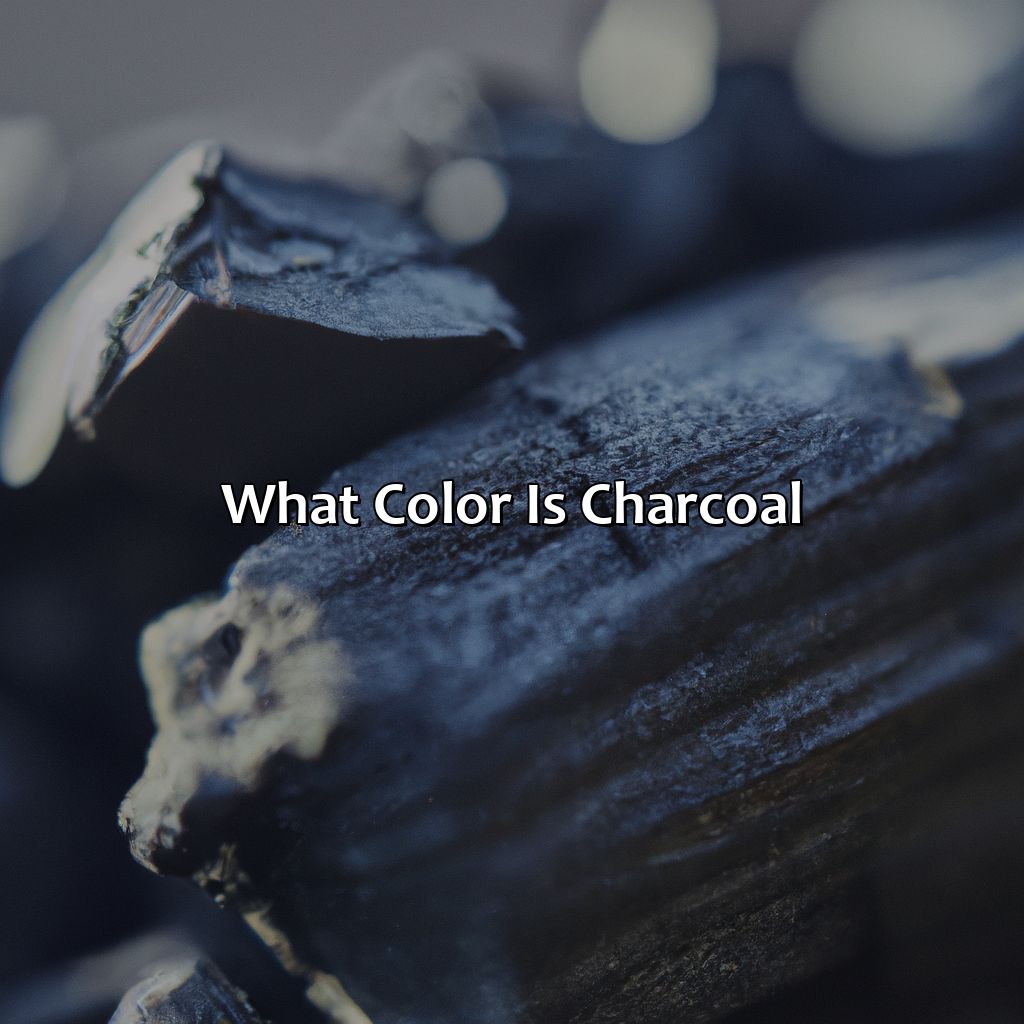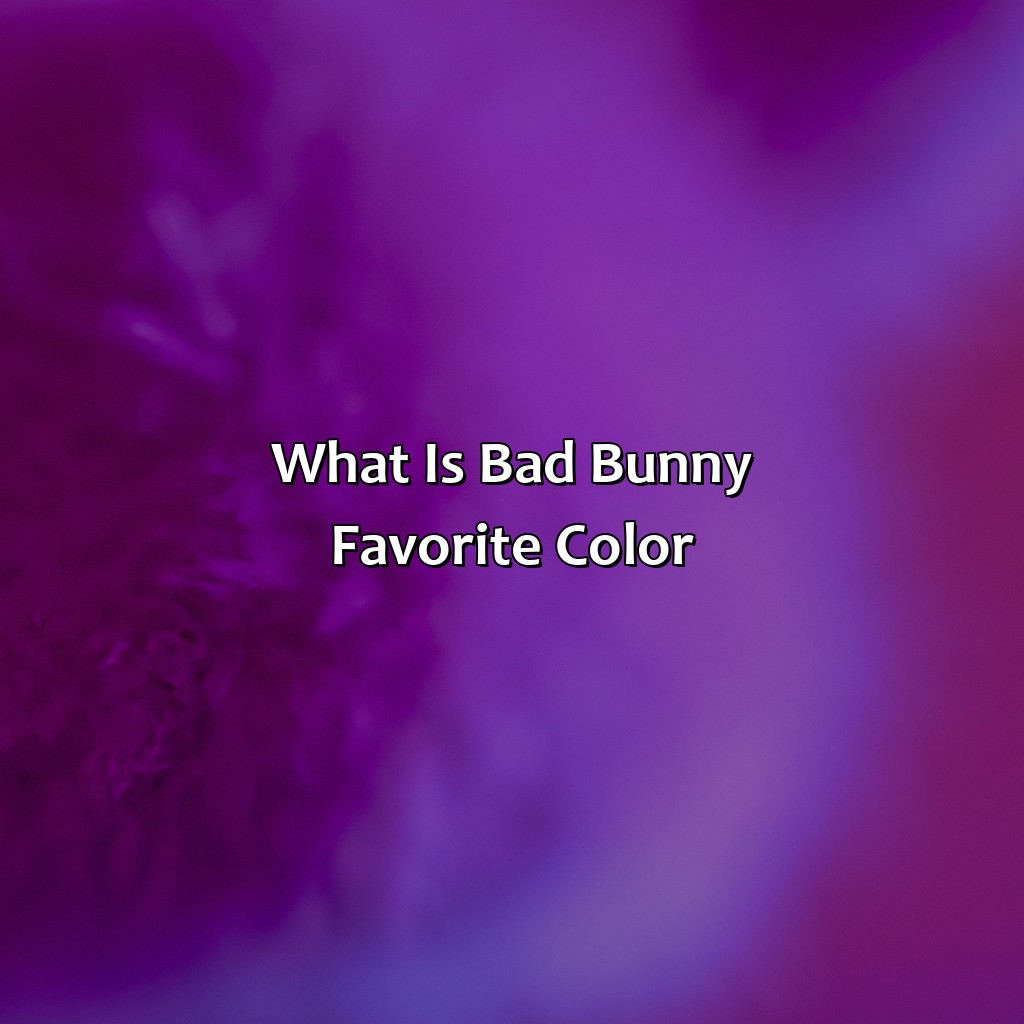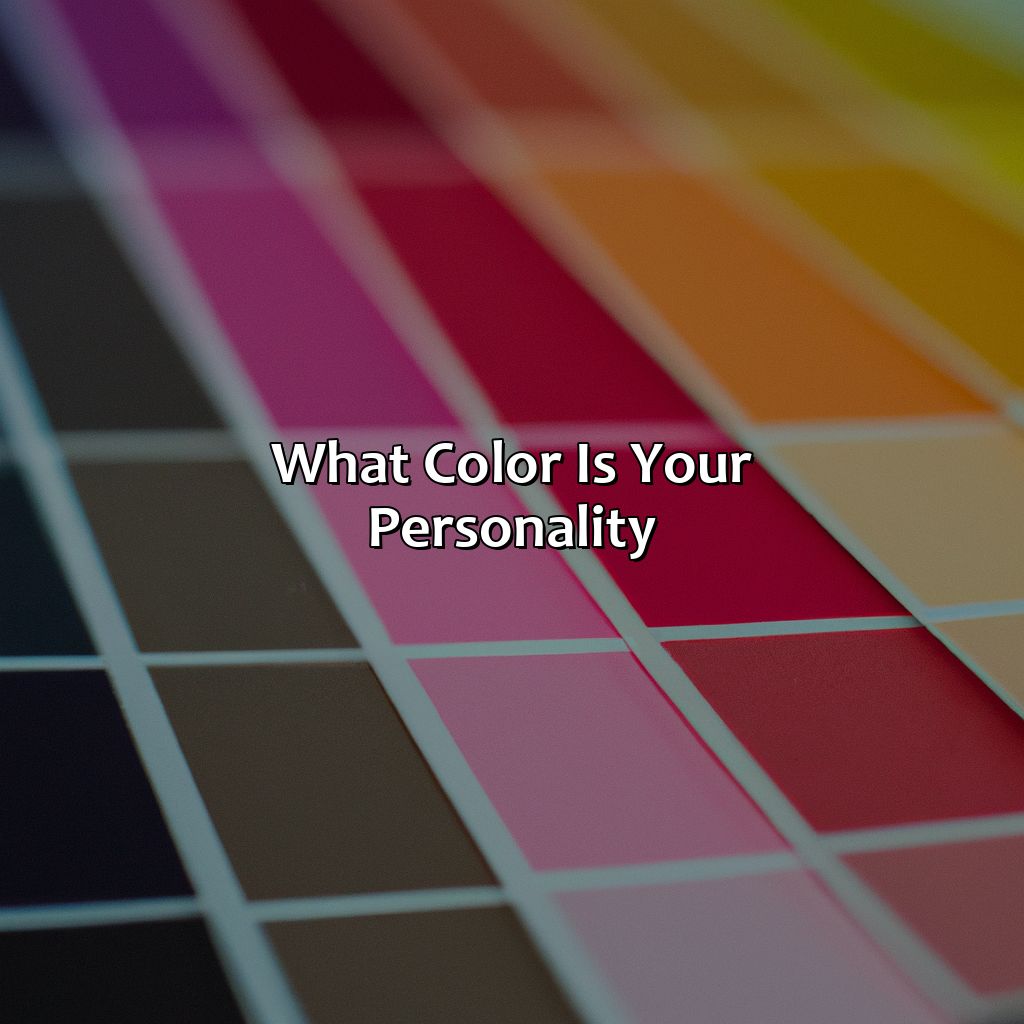Key Takeaway:
- Hue is a property of color that refers to its position on the color spectrum, and it is what distinguishes one color from another.
- Hue can be described using various terms related to color, including saturation, chroma, tone, tint, shade, value, brightness, and pigments.
- Understanding hue is important for various aesthetic and psychological applications, such as color harmony, contrast, symbolism, and branding. Choosing the right hue involves considerations of color grading, color schemes, color matching, and color classification across languages and cultures.
Definition of Hue
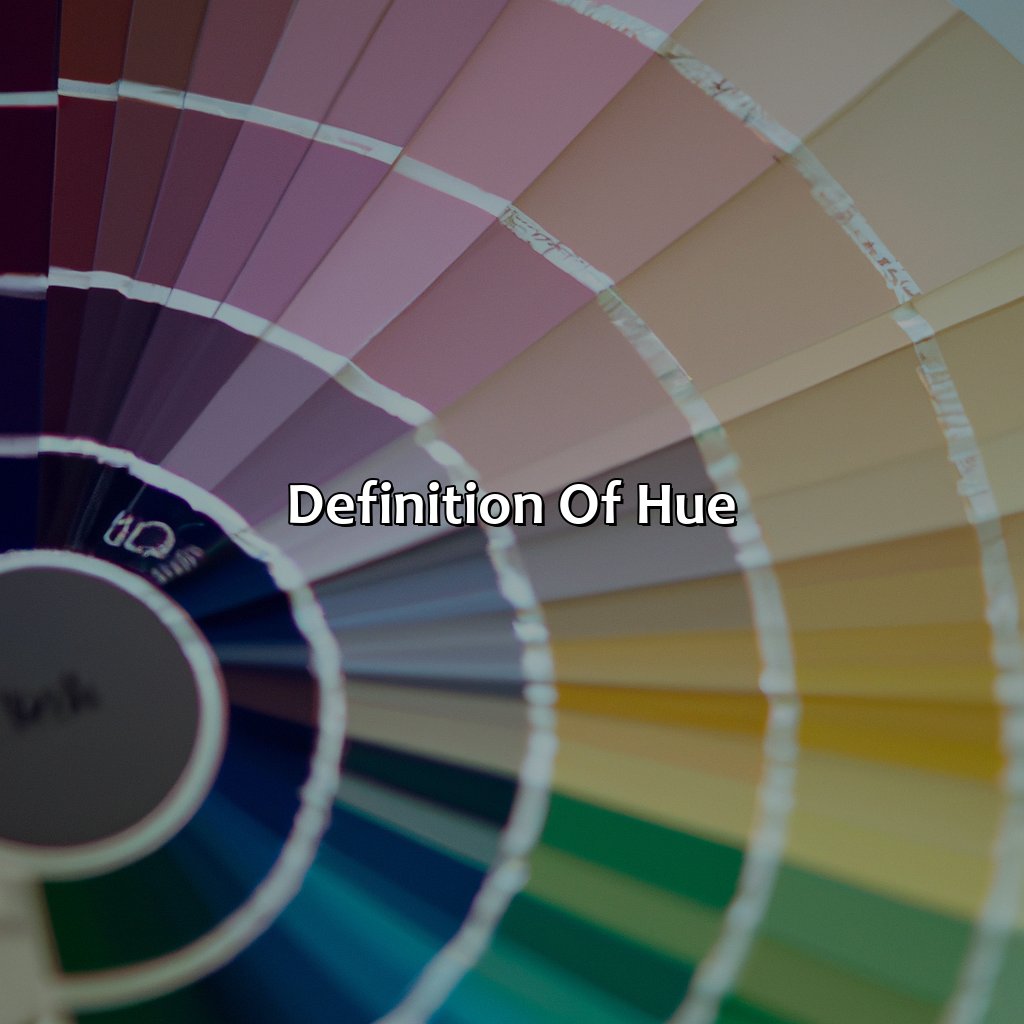
Photo Credits: colorscombo.com by James Gonzalez
Hue is the property of a color that allows us to distinguish it from other colors. It refers to the specific wavelength range of light that a color occupies on the visible light spectrum. Every color has a unique hue, which can be described as warm, cool, or neutral. Understanding hue is essential in color theory, graphic design, and art as it can affect emotions, symbolism, and harmony in visual compositions. By adjusting hue, one can create different shades and tints of a color, which can alter the overall impact of a design.
While hue is essential in color perception, there are also other color properties such as saturation and brightness that can affect how a color is perceived. Saturation refers to the intensity or purity of a color, while brightness refers to the lightness or darkness of a color. Combining these properties can create a vast range of colors with different visual effects. For instance, a highly saturated and bright color can evoke excitement or energy, while a muted and desaturated color can convey calmness or sophistication.
Fun fact: The first person to systematically study hue and color perception was Sir Isaac Newton in the 17th century. He discovered the spectrum of colors by passing a beam of light through a prism and observing the different colors that emerged.
The Science behind Hue
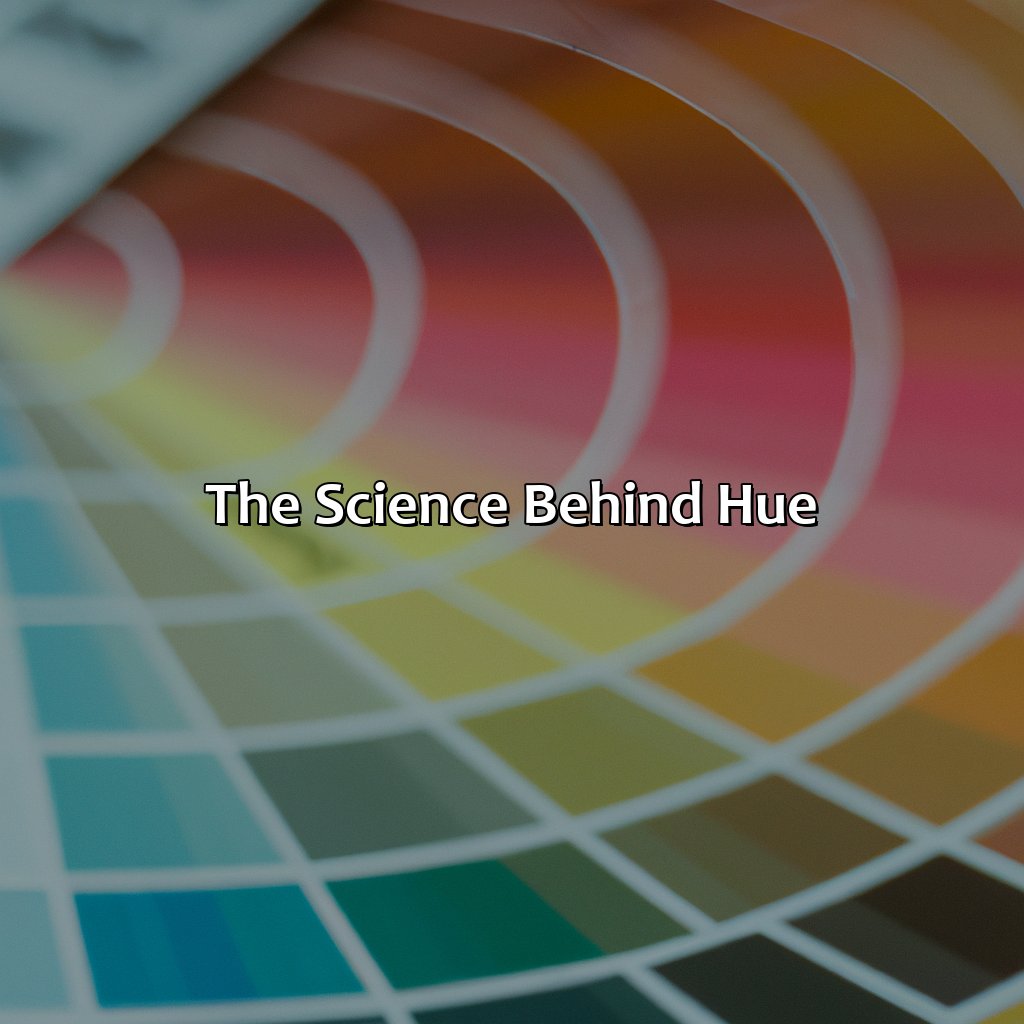
Photo Credits: colorscombo.com by Joshua Hernandez
Discover the science of hue in color! Dive into saturation, chroma, tone, tint, shade, value, brightness, and pigments. Explore the visible spectrum, the color wheel, complementary and analogous colors, monochromatic colors, and color mixing. Delve further into hue, saturation, and brightness. Uncover color perception, psychology, symbolism, and its importance in different cultures. Study color therapy and color blindness and gain insights into color vision deficiency complexities.
The Visible Spectrum
The spectrum of light that is visible to the human eye is known as chromatic radiation. This range of colors can be produced by passing white light through a prism or viewed as part of a rainbow. By observing this visible spectrum, we can differentiate hues across its spectral distribution.
Hues are classified based on their position in the visible spectrum, ranging from red on one end to violet on the other. These primary colors combine in various ways to produce secondary colors such as green, orange and purple. They also mix together with tertiary hues like yellow-green and blue-violet.
What differentiates hues is their wavelengths which correspond with specific color perceptions. The longer-wavelength colors give off indistinguishable warm colors like red and orange while shorter ones offer distinguishable cool hues like blue and violet.
In 1666, Isaac Newton first observed the visible spectrum after conducting experiments on a beam of sunlight shining through a prism. His experimentation revealed that daylight could be separated into composite hues via refraction.
Get ready to spin the color wheel and mix it up with complementary, analogous, and monochromatic colors in the world of color theory.
Color Wheel
The visual representation of the color theory is known as the Circular Color Spectrum. It displays all hues in ordered form.
| Primary Colors | Secondary Colors | Tertiary Colors |
| Red | Orange | Red-Orange |
| Yellow | Green | Yellow-Green |
| Blue | Purple (or Violet) | Blue-Purple (or Blue-Violet) |
Complementary, analogous, and monochromatic colors can be found on the color wheel.
Interestingly, Leonardo da Vinci pioneered a theory where light is broken into spectrums and mixed together to create more diverse hues.
A fun fact: In the early days of art depictions of Saint Henry II of Bavaria were created using electric blue paint unknowingly contaminated with lead causing his skin to appear blue!
Exploring the depths of hue, saturation, and brightness – where color perception meets psychology, symbolism, and even therapy.
Hue, Saturation, and Brightness
Hue refers to the pure, dominant color that we perceive in an object or image. Saturation is the intensity of that color, and brightness measures how light or dark it appears. The ratios between these three elements determine the overall appearance of a specific shade or tone.
| Element | Definition | Measurement Scale |
| Hue | The dominant color perceived in an object or image. | Color Wheel, Primary hues being Red, Yellow & Blue. |
| Saturation | The intensity of a hue. | Ranging from high saturation to low/monochrome. |
| Brightness | How light or dark a color appears. | Ranging from 0-100%, with 0 being black and 100 being white. |
Besides determining color perception and visual aesthetic appeal, Hue, Saturation, and Brightness are also vital to color psychology, symbolism in different cultures, providing therapeutic effects in Color therapy and detecting Color-blindness/color vision deficiencies. Primary hues are the foundation, secondary hues are the spice, and tertiary hues are the nuanced flavors that make color so delicious.
Different Types of Hue
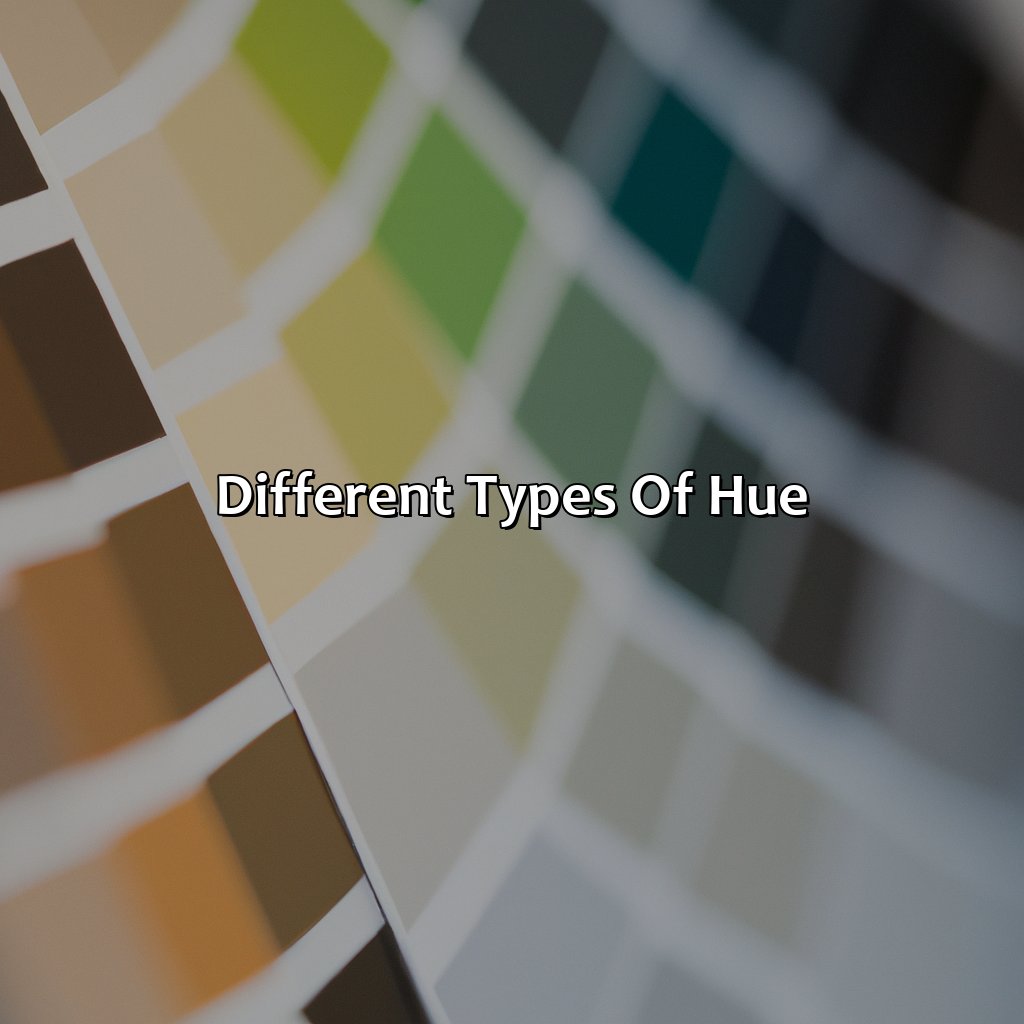
Photo Credits: colorscombo.com by Jason Hill
To grasp the distinctions of shades, you can split color theory into segments. Primary hues are the basic foundations. Secondary hues are made by blending primary ones. Tertiary hues come from combining secondary hues.
Primary Hues
Primary hues are the fundamental colors that create all other colors. These hues are the building blocks of color theory and a crucial element in art, design, and various forms of media.
| Red | Blue | Yellow |
The three primary hues are red, blue, and yellow. They cannot be created by mixing other colors but can be combined to make secondary and tertiary hues.
These primary hues have unique properties that influence their perception by humans. Understanding these properties can help artists and designers create color schemes that capture specific moods or emotions.
Pro Tip: When working with primary hues, keep their properties in mind to ensure your combinations are balanced and aesthetically pleasing.
Secondary hues: the colors you mix when you can’t decide between the primary ones.
Secondary Hues
Secondary hues are formed by mixing two primary hues in equal amounts. There are three secondary hues, each lying between adjacent primary hues on the color wheel. Green is made by mixing blue and yellow, orange is a combination of red and yellow, and purple results from mixing red and blue.
| Secondary Hues | Primary Hues | Color Code |
|---|---|---|
| Green | Blue + Yellow | #00FF00 or RGB(0, 255, 0) |
| Orange | Red + Yellow | #FFA500 or RGB(255,165,0) |
| Purple | Red + Blue | #800080 or RGB(128,0,128) |
It is interesting to note that secondary hues have a lower saturation than their respective primary hues. In contrast to primary hues that radiate power and boldness, secondary hues exude a sense of calmness.
To create color schemes with secondary hues, one can use analogous (hues next to each other on the color wheel) or complementary (opposite colors on the color wheel) schemes.
Don’t miss out on the impact of secondary hues in your designs. Incorporate them thoughtfully to add depth and intrigue to your work.
Mixing primary and secondary hues together can be a gamble, but the risk is worth taking when it comes to creating unique and vibrant tertiary hues.
Tertiary Hues
Tertiary Colors in the Color Wheel
The tertiary hues in the color wheel are formed by combining equal amounts of one primary hue with one secondary hue. Primary hues (red, yellow, blue) and Secondary hues (green, purple, orange) are used to form these tertiary colors; red-orange, yellow-orange, yellow-green, blue-green, blue-purple and red-purple.
| Tertiary Hues | Primary Hue | Secondary Hue |
|---|---|---|
| Red-Orange | Red | Orange |
| Yellow-Orange | Yellow | Orange |
| Yellow-Green | Yellow | Green |
| Blue-Green | Blue | Green |
| Blue-Purple | Blue | Purple |
| Red-Purple | Red | Purple |
Operations on Tertiary Hues
Tertiary hues are incredibly versatile since they blend beautifully with almost any color to create different moods or impressions. These colors bring sophistication and depth to designs while still allowing designers more possibilities for creativity.
Mixing each tertiary hue with white generates tints of that same color that can be utilized for lighter feels in designs. Mixing grey shades with tertiary colors creates a more restrained color palette for a subdued mood.
For more natural and earthy styles, tertiary hues can be mixed with black or other dark colors to generate deeper shades that embody warmth. Combining these toned hues in unique ways can lead to a range of potentially beautiful color schemes for your next design project.
Whether it’s pleasing to the eye or stirring up emotions, the importance of hue can’t be underestimated in both aesthetics and psychology.
Importance of Hue
Discover the importance of hue in color! Explore the aesthetics and psychology. Focus on aesthetics to learn about harmony, contrast, temperature, and warm/cool white. In the psychology sub-section, look at literature, art, music, advertising, branding, logos, web design, fashion, and interior design. All these use color symbolism to communicate and evoke emotion.
Aesthetics
The visual appeal of a color largely depends on its hue, as it can evoke different feelings and emotions. An appropriate hue choice elicits an aesthetically pleasing experience for the viewer.
Aesthetics in color is determined by the color harmony, contrast and temperature. Color harmony refers to the use of hues that are complementary or adjacent on the color wheel, creating a visually appealing balance. On the other hand, color contrast is achieved by using hues opposite each other on the color wheel, resulting in a striking visual representation. The temperature of a particular hue refers to its perceived warmth or coolness. Warm white and cool white are examples of how varying hues can impart warm or cool color temperatures.
An ideal hue selection not only creates an aesthetically pleasing look but also evokes specific emotions due to psychological associations with certain shades. For instance, red represents passion and love while blue signifies calmness and tranquility.
Studies have shown that proper hue selection can affect user engagement and satisfaction in various products like websites or packaging design- improving branding recognition when utilized smartly. According to Forbes Magazine’s research report “Impact of Colors on Marketing”, people make subconscious judgment about products within 90 seconds of initial viewing period; between 60% and 90% of our assessment depending on product’s colors alone.
Color harmony, temperature, contrast share interrelationship; hues can be combined together more successfully only if we do proper mix-match depending upon scientific views supported by human psychology thus making it vital for communication designers to choose appropriate hues.
(Source: Forbes)
Color symbolism is not just for poets and artists; it can also make or break the success of branding, advertising, web design, and even fashion and interior design.
Psychology
Understanding the Impact of Colors on Human Perception and Behavior
Color plays a significant role in human perception and behavior, influencing emotions, thoughts, and actions. This phenomenon is known as color psychology. It is the study of how colors affect our mind and body, shaping our perceptions of ourselves, others, and the world around us.
Color symbolism is an intricate aspect of color psychology that has several applications in various industries such as literature, poetry, art, music, advertising, branding, logos design and web design. Different shades evoke different feelings- blue can convey calmness and trustworthiness while red could relate to excitement or danger.
These effects are used by businesses to influence consumer behavior and emotions when they use specific colors for branding or marketing campaigns. Choosing the right hue based on its symbolism could either reinforce positive perceptions about a product or create negative associations with it.
Choosing the right hue is like finding the perfect match on a dating app – it takes understanding your preferences, playing with color schemes, and using the right tools to create a harmonious and eye-catching pairing.
Choosing the Right Hue
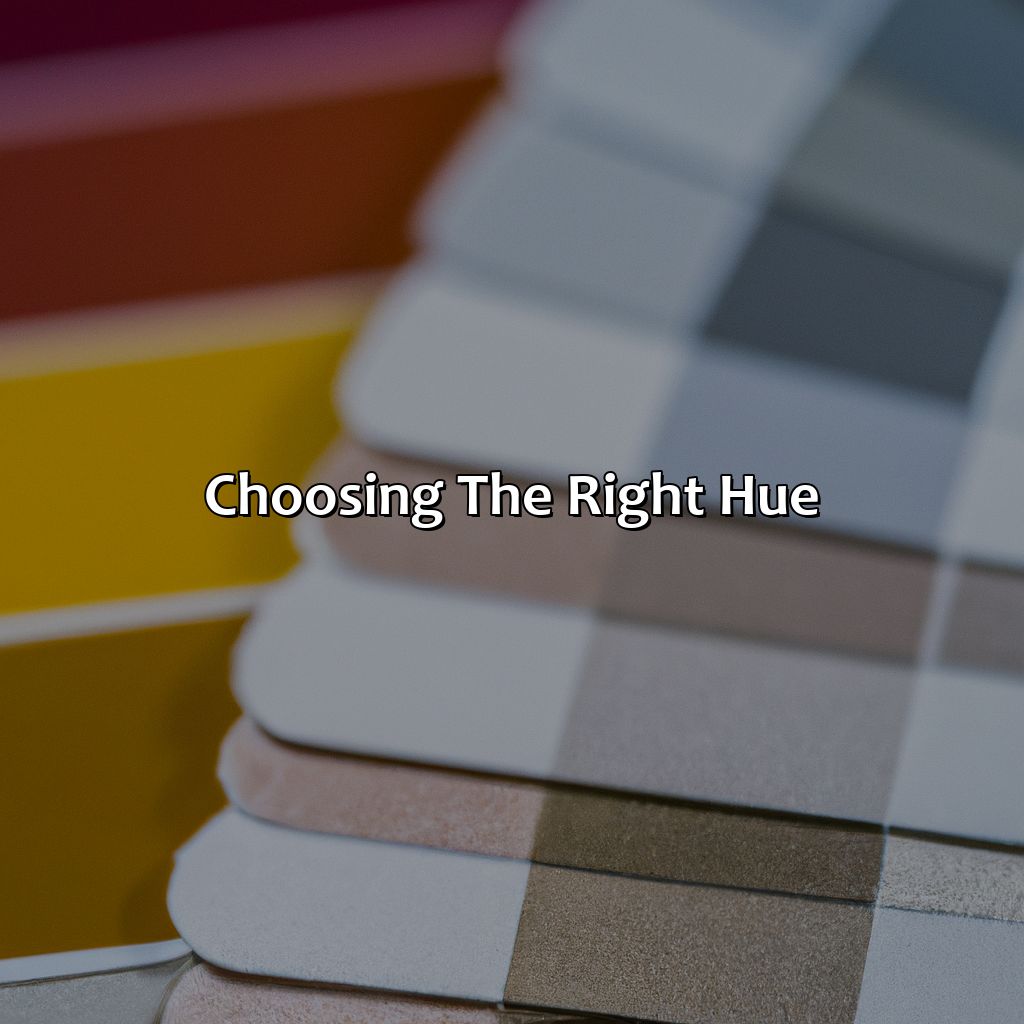
Photo Credits: colorscombo.com by Scott Moore
Choosing the right hue for your project involves color grading, RGB, CYMK, HSL, and color wheels. To make a dynamic color scheme and palette, you should consider color harmony, symbolism in different cultures, and trends. Here, we will look into symbolism and harmony more closely.
Color Harmony
Achieving balanced and visually appealing color schemes in design is called Color Harmony. Understanding the relationship between hues, whether complementary or analogous, helps select colors that work well together. Color harmony creates harmony in the design of products, graphics, and other visual media.
Different types of color harmony include monochromatic, analogous, complementary, triadic, and tetradic. Monochromatic harmony involves using varying shades of one color. Analogous harmony uses colors next to each other on the color wheel like green and yellow-green. Complementary harmony combines opposite colors like yellow and purple. Triadic harmonies use three equally spaced colors on the wheel while Tetradic uses four.
This leads to a better visual experience for users as it provides consistency in the color selection that reflects branding efforts.
Color symbolism varies greatly across different cultures, just like how the hue of your shirt can drastically affect the impression you make on someone.
Color Symbolism
Color symbolism has played a significant role in various cultures and can convey distinct meanings. Color symbolism can differ by region, religion, or personal beliefs. Understanding color symbolism is crucial in branding, marketing, and design to evoke specific emotions and messages.
In different cultures, colors symbolize different things. For instance, white signifies purity or innocence in Western culture but represents death in Chinese culture. Red signifies good luck and prosperity in China but can represent danger or warning in Western culture. In India, yellow is associated with holiness and enlightenment.
Knowing the cultural significance of colors can help avoid unintentional associations while communicating effectively with one’s target audience or community. Proper utilization of color symbolism enhances brand recognition and promotes positive emotions through association.
Color symbolism holds the power to communicate messages without words. By using it effectively, we can create strong emotional connections with our audiences, making it essential to understand how color appeals affect people’s behaviors and perception of a brand. Fear of missing out on potential opportunities is high for businesses that do not recognize the importance of color symbolism when creating their logos or brands.
Five Facts About Hue in Color:
- ✅ Hue refers to the dominant wavelength of a specific color. (Source: My Modern Met)
- ✅ Hue is one of the three properties of color, along with saturation and brightness. (Source: Color Mean Creative)
- ✅ The traditional color wheel shows 12 distinct hues. (Source: ThoughtCo)
- ✅ Artists use hue to create mood, contrast, and depth in their work. (Source: Art Hearty)
- ✅ Hue can be altered through the addition of white, black, or gray, resulting in a tint, shade, or tone of the original color. (Source: The Spruce Crafts)
FAQs about What Is Hue In Color
What is hue in color?
Hue refers to the dominant wavelength of light that is perceived by the human eye. It is what gives a color its characteristic appearance and distinguishes it from other colors.
How does hue differ from saturation and brightness?
Saturation refers to the intensity or purity of a color, while brightness refers to its perceived lightness or darkness. Hue, on the other hand, refers to the actual color itself and is independent of its saturation or brightness.
Can hue be measured?
Yes, hue can be measured using a spectrophotometer, which measures the wavelength of light reflected off of an object. This allows for accurate determination of the hue of a particular color.
What is the color wheel and how is it related to hue?
The color wheel is a tool used by artists and designers to organize and categorize colors based on their hue, saturation, and brightness. It typically consists of 12 colors arranged in a circular format. The relationships between these colors can be used to create harmonious color schemes in art and design.
Can different hues be mixed together to create new colors?
Yes, different hues can be mixed together to create new colors. For example, mixing blue and yellow creates green. This is the basis of color theory in art and design.
Why is understanding hue important in design?
Understanding hue is important in design because it allows the designer to control the mood, tone, and overall feel of a design. Different hues evoke different emotions and can be used to effectively communicate a message or brand identity.

